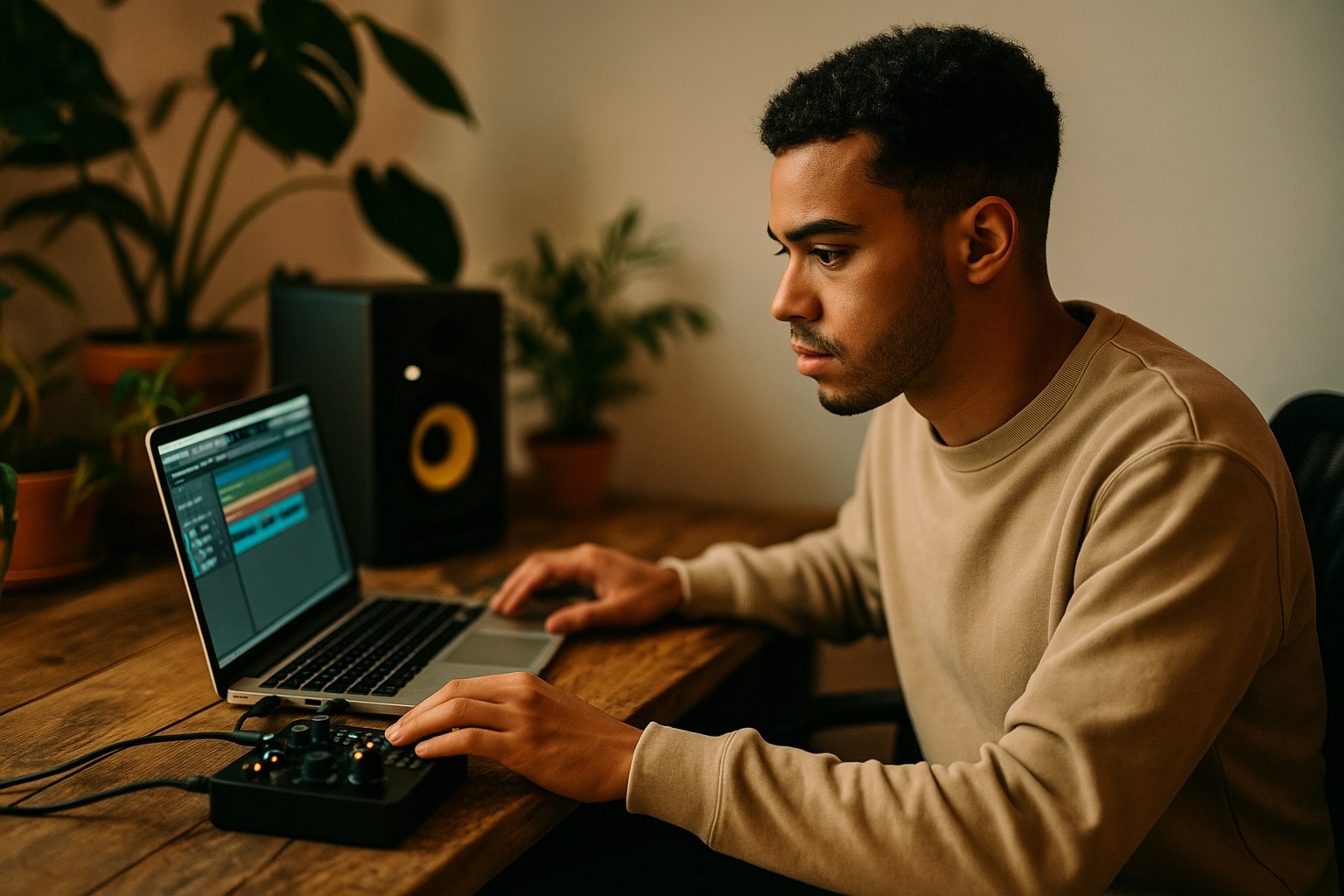Do I Need an Audio Interface for Music Production?

Do you need an audio interface for music production?
You need an audio interface if you plan to record vocals, instruments, or connect professional speakers. If you’re focused mainly on electronic production or beatmaking inside a DAW, you can start without one — but an interface improves sound quality, input flexibility, and overall workflow.
If you’re starting your music production journey, the word "audio interface" can feel like an expensive gatekeeper.
Do you really need one?
The real answer depends on what kind of music you're making — and how deep you want to go.
Let’s break it down clearly.
🎤 1. If You’re Recording Vocals or Instruments, You Absolutely Need One
Want to record:
-
Vocals?
-
Guitars?
-
Synths with real outputs?
Then yes, you need an audio interface.
Your laptop’s built-in mic input and headphone jack aren't designed for professional recording.
Interfaces give you:
-
Preamps to boost microphone signals cleanly
-
Analog-to-digital converters that capture high-quality sound
-
Phantom power for condenser microphones
-
Proper connections (XLR, 1/4-inch) for instruments and mics
Without an interface, your recordings will sound noisy, quiet, or flat-out wrong.
🎯 Bottom line: No interface = no serious recording.
The 7 Steps To Recording Your Voice At Home
⭐️ Start by downloading all of my FREE Music Production Guides ⭐️ It took me years to learn this stuff!
🎛 2. If You’re Only Making Beats or Producing Electronic Music, You Can Start Without One
If your whole world lives inside your DAW —
MIDI, samples, soft synths, drum programming —
then technically, you don’t need an interface to get started.
You can produce with just:
-
A laptop
-
Headphones
-
A MIDI controller (optional)
However, an interface will still improve:
-
Audio quality
-
Latency (delay between playing and hearing sound)
-
Headphone and speaker power
-
Expandability for future growth
🥷 If you want your beats to slam harder, even in headphones — an interface helps.
Should I Mix on Headphones or Speakers?
🎚 3. Preamps: The Secret Weapon Inside
Every audio interface has built-in preamps.
They take the quiet signal from a microphone or guitar and boost it to a recordable level —
without adding noise, distortion, or cheap "fizz."
High-end preamps (like those in Universal Audio, RME, Apogee interfaces) also add subtle color that makes recordings feel more alive.
Without a good preamp, vocals sound flat, instruments sound weak, and mixes lack presence.
 ⭐️ Download my FREE Home Studio Setup Guide ⭐️
⭐️ Download my FREE Home Studio Setup Guide ⭐️
🔈 4. Connecting to Powered Speakers
Another critical reason to have an interface:
Proper connection to your studio monitors.
Your laptop’s headphone jack isn’t meant to drive big speakers.
An interface gives you:
-
Balanced outputs (TRS or XLR)
-
Volume control for speakers
-
Cleaner signal without buzzing or humming
If you’re investing in speakers, an interface is non-negotiable.
🎯 An interface doesn’t just capture sound — it helps you hear it the way it’s meant to be.
How to Set Up Your Home Studio Speakers

🥷 Final Thought:
An audio interface is your bridge between the real world and your digital world.
If you're serious about recording, mixing, or even just hearing your music the way it deserves, it's not a luxury — it's standard gear.
⚡ Start where you are.
🎯 But know where you're going — and build your sound from a strong foundation.
⭐️ Download my Free Magic Compressor Settings Guide ⭐️
⭐️ Download my Free 10 Characteristic of a Sound Wave Guide ⭐️
#protools #daw #homestudio #recordingschool #recording #musicproduction
Also read:
How to Start Your Own Online Business Teaching Music
Hey, I'm Futch - Music Production Coach and Ableton Certified Trainer
Learn how to make your first song and beat in Ableton Live with my
FREE 90-minute Ableton Live course
I've been teaching audio engineering and music production for 35 years.⭐️
Check out my new online music production program: Music Production Ninja...









